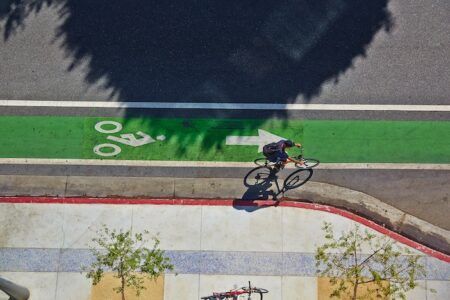A new report just published by Flowbird identifies ways in which digitalisation, electric vehicles (EVs) and last mile logistics must be considered as parking services evlove, post-Covid.
The What Will Parking Look Like In A Post-COVID World? report looks at the future of parking, and how local authorities could respond to changing behavior and sustainability goals.
Over the past year, Flowbird has been working closely with councils, watching changes to parking and payment data, and talking to technology providers, to understand changing usage patterns and opportunities.
Through this, it has identified three key opportunities, and the associated challenges for local authorities to maximise opportunities from parking space.
 Digitalisation must be managed
Digitalisation must be managed
The most obvious and most mature, mobile payments and management are clearly on the agenda. But three problems present themselves. Firstly there is the ‘too many apps’ problem. As apps proliferate, councils need to embrace interoperable standards and payment systems so customers can manage their parking and charging through a single app, with affiliate agreements.
There is also an ‘enforcement’ problem. Digital apps need to link to physical infrastructure that checks people are using spaces and charging as they say they are. Furthermore councils need to make sure no one is left behind by ensuring physical payment terminals with a range of payment options remain in place for as long as customers want them.
EV adoption will spur parking evolution
Deploying EV charging into parking spaces was the top issue for many councils. The big challenge was balancing investment with demand. The key for many being building in flexibility by laying the infrastructure now, then adding charge points as they are needed.
Lack of defined leadership was a big block to progress. The most successful operations created task forces that combined input from parking, EV and street furniture departments and had clear decision making responsibilities. Many parking managers emphasized the importance of a combined strategy and a single physical and digital system for managing parking and charging infrastructure and payments.
Alternative uses must be found for underutilized spaces
While car ownership is falling, last mile logistics is inversely growing as people shop more online and order meals to be delivered.
“These vast logistical operations need hubs to manage local distribution and places to park and charge fleets of increasingly electric vehicles”, says Paul McCormack founder of Infinium Logistics, a contributor to the report.
Car parks are the perfect place for these, with opportunities for nested overnight spaces for electric fleet charging, replacing empty spaces with lockers, and even converting empty car parks into E fulfilment sites. The report advises that making all this work needs to combine digital, data and physical infrastructure to evolve car parks so that they remain valuable community resources – and revenue generators – in the short and long term.
Local authorities must absorb the data, allowing them to make informed decisions about how to evolve their parking spaces. They should resist jumping on every trend, but be ready to embrace change when the time is right.
“Parking does not have the luxury of tech companies’ rapid ‘fail fast’ mentality – it remains limited by physical constraints, long term planning cycles, and a need to cater to everyone,” says Danny Hassett, MD at Flowbird Smart City UK Limited. “Parking must embrace new technologies to improve customer experiences, but also offer consistency and familiarity for those not yet ready to change. Critically, it must follow the combined data from parking terminals, wardens, apps and EV chargers to understand the specific challenges in opportunities for each council – which will be different in different areas, and use this to inform decisions about changes across the estate.”






